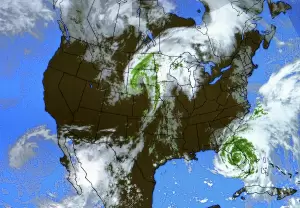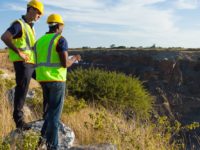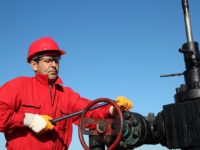
Meteorology is the study of the atmosphere. Meteorologists use science and math to understand and predict weather and climate. They also study how the atmospheric and weather conditions affect the earth and its human inhabitants.
What Does a Meteorologist Do?
Meteorologists may work on daily weather forecasting, conduct atmospheric research, teach, broadcast the weather, or advise clients for private meteorological companies.
Weather Forecasters
Using sophisticated computer models and data collected from around the world they tailor forecasts to their own local areas. While we often think of broadcasters, there are many more meteorologists who work behind the scenes, often for government agencies.
There's also a growing number of private sector meteorologists working for companies that specialize in providing highly specific information on challenging weather events. Clients may include power providers concerned about demand during a heat spell, importers of agricultural products, and sporting associations concerned about weather during the big game. Some airlines even have their own meteorology departments. They may also advise companies and governments on the best locations for wind farms.
Atmospheric Researchers
Atmospheric researchers study the workings of the atmosphere to better understand how it works, and how it's interconnected with our planet's waters. This connection often leads atmospheric researchers to work in tandem with oceanographers, hydrologists, environmental scientists, physicists, and mathematicians to collect and interpret data and study atmospheric phenomena. For example, different types of scientists work together to study globally-connected, complex issues like climate change, and to predict its effects on human beings and other species.
Climatologists
Climatologists study historical climate patterns to understand long-term weather patterns and predict future climatic shifts. Most climatologists study global warming. They may use historical records in the form of written accounts, or shifts “recorded” in ancient ice or sediments. Paleoclimatologists who study prehistoric climate conditions often do fieldwork to retrieve such physical evidence.
Meteorologists may become faculty and teach at colleges or universities. They may work for in-depth undergraduate, graduate and Ph.D. programs, perform research, and direct the research of graduate students, or they may teach atmospheric science classes that supplement the offerings of related science programs. Studying meteorology is also good training for becoming a general science teacher at the high school level.
Learn more about climatology.
Forensic Meteorologists
Forensic Meteorologists investigate and provide information on weather conditions at specific moments in the recent past. Their work provides insight into how weather may have played a role in a traffic accident, fire, or other event having monetary or legal ramifications. Forensic meteorologists may testify in court.
Meteorologists may also work on improving weather-related technology, such as data collection instruments and computer models. They may also work design informative digital weather displays.
Where Does a Meteorologist Work?
The U.S. government is the largest employer of meteorologists and atmospheric scientists, many of whom work for the National Oceanic and Atmospheric Administration (NOAA), which also oversees the National Weather Service. NOAA has large research labs in Miami, Florida, Boulder, Colorado, and Norman, Oklahoma. However, many NOAA meteorologists work at weather stations dispersed across the country. Their size varies; some weather stations employ only a single meteorologist.
Meteorologists also work within the armed forces, and for the Department of Defense as civilian contractors. NASA also conducts atmospheric research at labs in Washington, D.C., Northern Virginia and Maryland. The National Center for Atmospheric Research (NCAR) in Boulder, Colorado, is another obvious employer. While the Center conducts various kinds of research, it's also deeply involved in studying climate change. Private companies are a fast-growing source of employment for meteorologists. Consulting firms, airlines, and television stations are a few examples of private employers.
The majority of meteorologists work indoors in weather stations, office environments, or laboratories. However, some jobs may involve occasional outdoor work. University and government researchers may do field work to collect data or observe weather events, and broadcast meteorologists may report on weather events from the field.
Schedules
While most meteorologists work full time, they often don't keep the usual 9-to-5 work day. Many entry-level and other field station weather forecasters work rotating shifts to cover the weather continuously, including nights, weekends, and holidays. They may also work extended hours during short-term, severe weather events. Other atmospheric scientists keep a typical schedule, though researchers may work extended hours on particular projects.
What is the average Meteorologist salary?
The median salary for meteorologists was $99,740 as of May 2020. The R&D sector paid the most, with a median salary of $110,790, followed by the federal government, at $107,520.*
Meteorology Jobs
Meteorologist jobs are mostly concentrated on determining atmospheric process and phenomena in order to accurately forecast the weather. Most jobs are client facing, however, there are research-driven meteorology positions available. While job duties do vary between positions, most meteorologists should be able to perform the following tasks as part of their job:
- Deliver televised or streaming forecasts for newscasts
- Prepare and produce clear weather graphics to convey information to internal and external stakeholders
- Provide engaging content to digital media channels
- Demonstrate an understanding of social media and communicate effectively with digital stakeholders
- Communicate with local stakeholders, consumers, and students to communicate about weather science
- Represent business organization at community and industry events
- Review current literature to stay abreast of industry and scientific advancements
- Ensure that communications are clear, engaging, and meaningful to stakeholders
- Analyze weather and provide accurate forecasts
- Ensure that weather content meets standards for journalistic integrity
- Coordinate weather communications across multiple platforms
- Have a deep knowledge or ‘intuition' regarding the weather conditions in pertinent regions
- Respond to emerging weather news
- Be prepared to travel temporarily on very short notice
- Provide information about weather, UV levels, and air quality issues like allergens and pollution
- Conduct meteorological research
- Use computer modelling to construct accurate predictions
- Analyze atmospheric data for trends and correlative relationships
- Communicate scientific presentations and reports for management, special interest stakeholders, and the public
There are generally no roles for senior meteorologists outside of the lab environment. However, these people often have broader responsibilities that include management of a lab or field team. Such responsibilities often include:
- Engage in maintaining instruments in a regulated state by performing system checks and maintenance procedures
- Make specialized forecasts for marine, aviation and transport purposes
- Consult with policy and stakeholders about meteorological issues pertaining to agriculture, forestry, transportation, and environmental management
- Issue weather advisories and warnings regarding dangerous weather, UV levels, or air quality conditions
- Answer media inquiries during special weather events and provide information to the public
- Fostering a positive work environment
- Drafting and managing scheduling and budgetary timelines
- Testing and calibrating equipment and instruments
- Taking measurements and recording data
What Is the Job Demand for Meteorologists?
The job market in this industry is projected to grow 8% between 2020 and 2030. This projection keeps pace with average job growth. Much of the growth will occur in the private sector.*
What do Meteorologists study?
Meteorologists usually need a bachelor's degree in atmospheric science or a closely related field that's specific to atmospheric phenomena. Degrees in physics, chemistry, or geoscience may be adequate for certain positions. Aspiring meteorologists may also study:
- Physics
- Chemistry
- Math
- Computer Programming
Since most graduate programs don't require a bachelor's degree in atmospheric science for admission, degrees in math, physics, and engineering are good preparations for graduate study. Research positions usually require at least a master's degree, though they will often require a doctorate.
Other Degrees Related to Meteorology
What Kind of Societies and Professional Organizations Do Meteorologists Have?
- The American Meteorological Society (AMS) is the foremost professional association for meteorologists. The Society publishes journals, holds annual conferences, trains teachers, and offers certifications for broadcast and consulting meteorologists.
- The American Geosciences Institute (AGI) is a federation of professional organizations falling within the geosciences. Atmospheric scientists may be interested in exploring their research areas from an integrated perspective through this forum. AGI allows meteorologists to network not only with others in the field, but also with earth scientists from related disciplines studying associated topics, such as oceanographers and hydrologists. AGI also provides information on career trends, news, and publications.
Recommend Resources
*2020 US Bureau of Labor Statistics salary figures and job growth projections for atmospheric scientists, including meteorologists reflect national data not school-specific information. Conditions in your area may vary. Data accessed September 2021.





